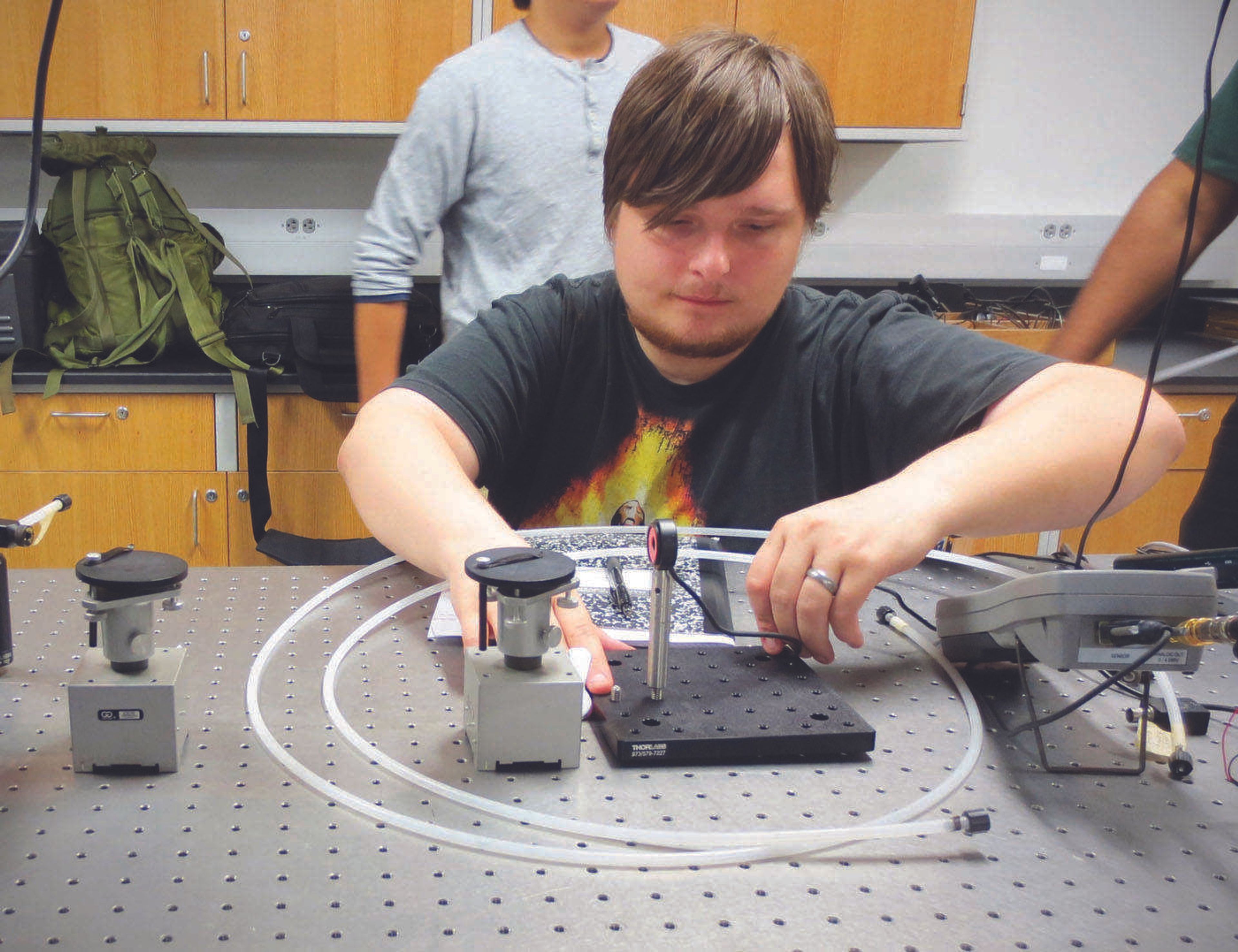Physics and engineering programs reaccredited
The engineering physics and engineering technology programs at Southeast Missouri State University have been reaccredited through ABET this year.
The engineering physics and engineering technology programs at Southeast Missouri State University have been reaccredited through ABET this year.
ABET's reaccreditation came after a period of evaluation during the spring semester that judged the quality of the Southeast programs involved. The programs' accreditation will last for six academic years.
"We were confident that we had a good program," Bradley Deken, the director of the engineering technology program, said. "We just hoped that it showed through in the materials we produced, especially since this was my first experience with accreditation"
According to Dr. David Probst, director of the engineering physics program, his program received its accreditation from the Engineering Accreditation Commission of ABET. The engineering technology department is accredited through the Engineering Technology Accreditation Commission of ABET.
Having an ABET accredited program gives the students in the programs an edge in the job market because employers in this career field often look for people who have graduated from an ABET accredited program.
"Employers recognize ABET as a certification that a student has come from a quality program in technology," Deken said. "Students might mention some extra difficulty in the program as a downside, but its something that will help them in the long run."
Probst said that each program does not get an advantage for having been previously accredited. They have the challenge of earning their accreditation at the beginning of each cycle.
"[We] have to demonstrate that certain processes are in place in [our] department for continuous improvement of [our] program," Probst said. "Part of it is demonstrating [our] students can achieve certain outcomes that ABET sets."
According to Probst, students should find being in an accredited engineering physics program beneficial. Anyone enrolled in the engineering physics program has the opportunity to obtain certification that can further boost their career potential.
"For engineers, there is a state licensure that [students] can get," Probst said. "In order to get the [professional engineer] license, a student has to graduate from an ABET accredited engineer program."
This is not the first time the engineering physics program was accredited. It was first accredited in 2000. The program has remained accredited ever since.
The university plans to adjust the current accreditation cycle to line up all the ABET accredited programs' accreditation periods. The processes of reaccreditation can be expensive, and by lining up every program's cycle, it should save the university money, according to Probst.
"We were given a six-year accreditation, but we will go back up in five to align all ABET programs on campus," Deken said. "That means we will have one year less to prepare for accreditation."
The engineering technology program was first accredited in 2006. As of last fall, Deken said there were 130 students in the program. The engineering physics program also has seen an increase in students from the single digits at the start of accreditation to more than 70 last fall.
Probst said that the engineering physics program was started in 1976, but did not qualify for accreditation at the time due to a lack of faculty.
"At the time, all the faculty were physicists. In order to be accredited back in those days they used to call engineering physics a non-traditional engineering program," Probst said. "In order to be accredited back then you had to have four engineering faculty members, and we had zero. Basically what had to happen was they had to wait for faculty to retire or something and replace them with engineers."
Both Deken and Probst expressed optimism about the future of their programs. They are confident that the students will graduate with the experience they need to find work.
"I had the privilege of visiting many manufacturing facilities in our region over the summer," Deken said. "One thing that became clear to me from these visits was that students coming from programs such as ours are very much in demand."






